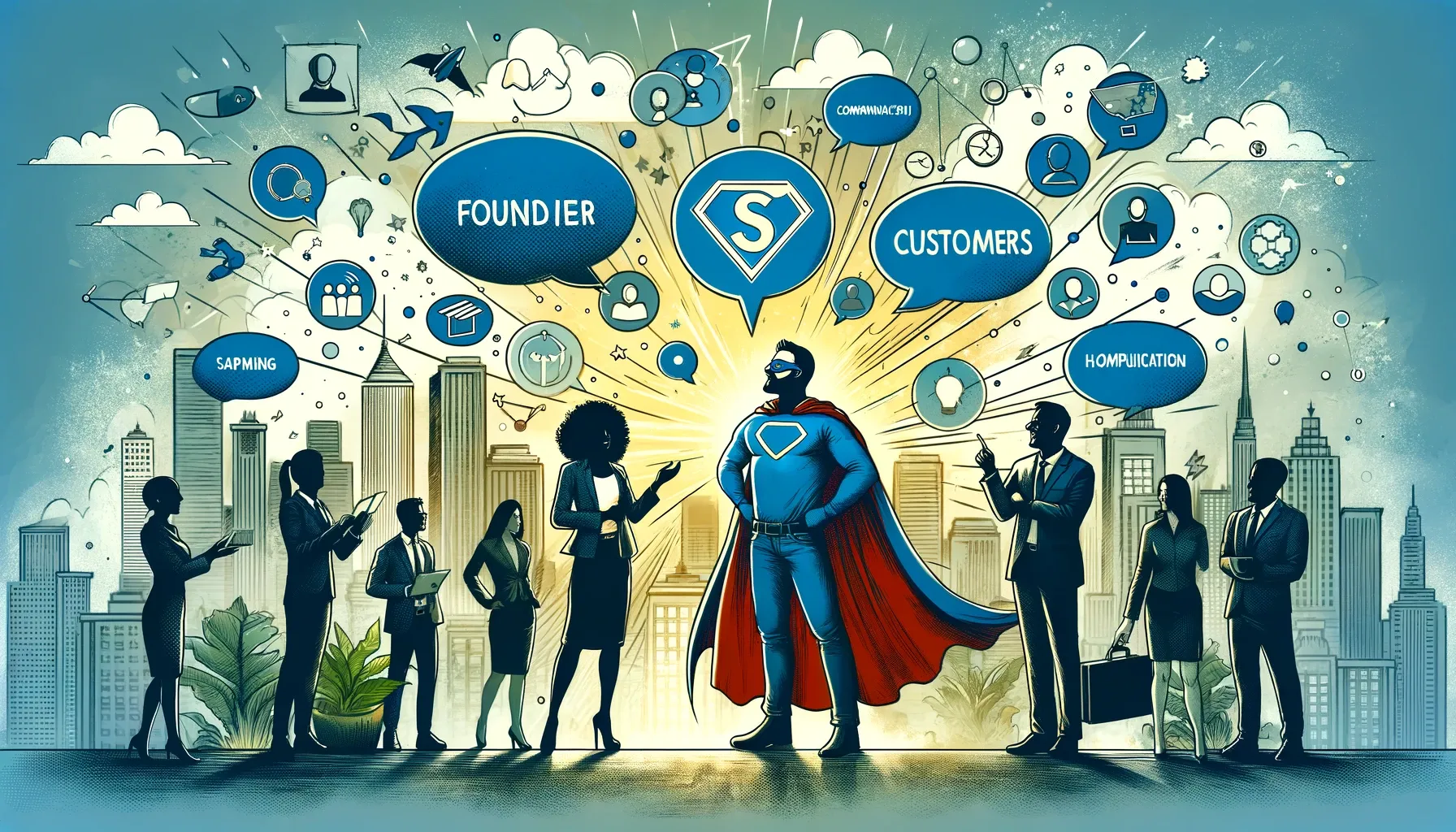Issue No. 23
You need this superpower
The superpower to improve churn, marketing, product-market fit, and onboarding. Interviewing customers.
Reading Time: 4 min

Source: DALLE, told to extract key phrases from this newsletter, create a prompt and using the style illustrative, colorful, futuristic create an image.
This week's main topic is "the superpower the best founders have."
What you'll read this week
- The best founders have this superpower
- Why it matters
- And how to use it
Enjoy!
Every founder needs this superpower
What if I told you that one founder superpower could do all of the following?
- Improve churn
- Improve your marketing
- Improve your product-market fit
- Improve your onboarding
It's the next best thing to reading minds.
It's talking to customers.
Blind Spots, everyone has them, most founders have this one
Let me tell you about a founder I talked to last year. He successfully grew his startup to $4k per year. It had initially started strong, but eventually growth stalled.
I spoke to the founder around the time when his growth was stalling. The call was about something other than his growth. It was about how he handles customer feedback.
And what he said blew me away, "I don't really ask customers for feedback. I go by my gut and my product vision."
Oof. 🤦🏻♂️
No wonder growth was stalling, and churn was growing!
If there's one Achilles' heel that most founders are prone to, it's being blinded by their vision.
Having a product vision isn't bad. You have to have one.
But no one gets it all right; you need to talk to customers to find out where you've missed the mark.
Your customers can tell you what they'll buy, what they want, and what they'll use.
But most customers can't tell you how to make it. In fact, they usually suck at it.
Good news! Because that's why they'll pay you.
As a startup founder, your job is to decode what customers are saying.
But, you can only know what to solve by talking to customers.
Don't have a customer to talk to? Do this
Hearing you have to talk to customers is fine if you have customers. But what about early on when you don't have any?
It takes more work to get meaningful feedback in the beginning. This is where your product vision matters. Go ahead and build on your vision.
But there are plenty of wonderful sources out there that you shouldn't ignore:
- Ask friends for introductions - For AskJack, we're asking for referrals to other HR heads. We know a couple of HR heads, but not many. Introductions for a conversation are more likely to happen when a friend makes them. Don't be afraid to ask! What's the worst they can say?
- Recruit Design Partners - Someone out there has the pain you're solving so badly that they'll be your design partner. They'll agree to be interviewed to help shape the future of your SaaS to help themselves. It's a win-win.
- Read Online Communities - Exhausted your personal network? Find online communities where your ideal customer hangs out. Read everything and anything you can. You'll learn how your customer talks (which will improve your marketing 100x), and you'll gain valuable insights into your target customer. Be sure to write down your insights. Collectively, they're gold. Bonus! Cold-DM them and invite them to be a design partner. There’s a great story about how a founder did this in a past newsletter.
- Troll Competitor Product Reviews - Finally, what are your potential customers saying about your competition? They're telling you what they love and what they hate. Both are valuable guides for your product.
Using these four tactics will get you plenty of insights and feedback.
Tactics to get customers to talk to you
But what about when you have customers already? How do you get them to share?
Just ask - Seriously, it's that easy. Yes, you'll get ignored. A lot. But you'll also reach people who say sure.
Here are some best practices for making the ask:
- Send an email from the CEO or Co-founder - Emails with authority are more likely to get a response. Never use "info@" or other generic email addresses.
- Send an email when they're likely most engaged: when they first sign up, start paying, or run into a bug. A personal email asking what they hope to achieve goes a long way. And never shy away from a bug. If you can't message the customer before they email you, it's gold.
- Use in-app surveys — In-app surveys are a great way to prompt spontaneous feedback. But just be sure to use them sparingly, as people grow fatigued by being asked constantly.
- Keep communication short and to the point! Don't beat around the bush; make the ask, show the value they'll get by participating, and leave it at that. Any more, and you'll see a drop off in participation.
My three keys for amazing customer conversations
Great, you've got someone who wants to talk to you!
or
You've had customer calls before, and they didn't go well.
Have no fear. These three practices will turn your lousy conversations into amazing ones rich with valuable insights.
- Be prepared — Have a plan; it'll show poorly if you don't.
- Know how to listen — Be an active listener. Pause 5 seconds before you pipe up.
- Seek for understanding — Don't assume what they mean and lean into asking, "Tell me more."
You can read more about my process for having great customer conversations here.
If you want to get serious, check out Demand-side Sales 101. It teaches you about Jobs to be Done interviews, which are fantastic.
If you're unfamiliar with active listening, check out the book Just Listen: The Secret to Getting Through to Absolutely Anyone.
Join the ProductFoundry Newsletter
Signup for insights into making great SaaS products and companies.